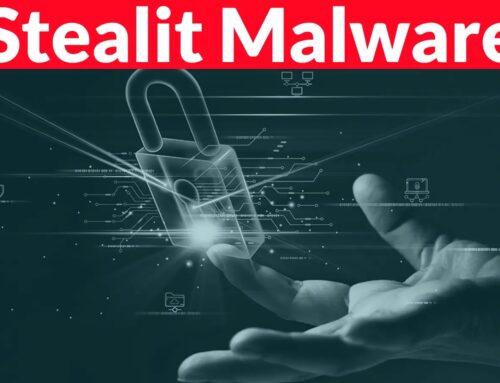
DarkCloud Stealer Employs New Infection Chain and ConfuserEx-Based Obfuscation
The digital landscape is a perpetual battleground, with cybercriminals continually refining their arsenals. A particularly alarming development is the emergence of the DarkCloud Stealer, a sophisticated information-stealing malware campaign that has amplified its threat by employing an innovative infection chain and advanced obfuscation techniques. This evolution signals a significant escalation in evasion tactics, making traditional security controls increasingly vulnerable. Understanding the intricate mechanisms of this new threat is paramount for any organization serious about defending its digital assets.
Understanding the DarkCloud Stealer
The DarkCloud Stealer, recently documented in cutting-edge threat intelligence reports, is not a typical, unsophisticated piece of malware. It represents a significant leap in cybercriminal methodology, focusing on stealth, persistence, and comprehensive data exfiltration. Its primary objective is to pilfer sensitive information, ranging from credentials and financial data to intellectual property, from compromised systems.
The Evolved Infection Chain: A Multi-Stage Delivery
What sets the DarkCloud Stealer apart is its meticulously crafted multi-stage delivery system, designed to bypass initial defenses and remain undetected. The infection often commences with seemingly innocuous archive files, a classic social engineering vector that continues to prove effective. However, the subsequent stages reveal a heightened level of sophistication:
- Initial Compromise: Users are often lured into opening malicious archive files (e.g., .zip, .rar) disguised as legitimate documents or software.
- Dropper Execution: Upon execution, these archives unleash a dropper component, which is heavily obfuscated to avoid detection by signature-based antivirus solutions. This dropper acts as the initial foothold.
- Staged Download: Instead of deploying the full payload immediately, the dropper typically downloads subsequent malicious components in stages. This fragmented delivery makes it harder for network intrusion detection systems to identify the full threat signature.
- Payload Deployment: The final stage involves the deployment of the DarkCloud Stealer payload. This payload is engineered for stealthy data collection and exfiltration, often leveraging legitimate system processes to blend in.
ConfuserEx-Based Obfuscation: A Shield Against Detection
A critical component of the DarkCloud Stealer’s evasion strategy is its extensive use of ConfuserEx-based obfuscation. ConfuserEx is a powerful, open-source protector for .NET applications designed to make reverse engineering and decompilation incredibly difficult. When applied to malware, it transforms the code in several ways:
- Control Flow Obfuscation: Scrambles the logical flow of the program, introducing complex and misleading jumps and conditions. This makes it challenging for analysts to follow the execution path.
- Renaming Obfuscation: Renames method names, variable names, and class names to meaningless strings, stripping away any readability that could aid in understanding the malware’s function.
- String Encryption: Encrypts all literal strings within the application, preventing easy identification of command-and-control (C2) URLs, file paths, or other identifiable markers.
- Anti-Tampering and Anti-Debugging: Incorporates mechanisms that detect attempts to modify the binaries or debug them in a controlled environment, causing the malware to terminate or behave erratically.
This level of obfuscation poses a significant challenge for automated analysis tools and even seasoned reverse engineers, requiring more time, specialized tools, and considerable effort to deconstruct the malware’s capabilities.
Remediation Actions and Proactive Defense
Defending against advanced threats like the DarkCloud Stealer requires a multi-layered approach that combines technical controls with robust security awareness. Generic advice won’t suffice; targeted actions are necessary.
- Email and Attachment Scrutiny: Reinforce strict policies regarding unsolicited emails and attachments. Implement advanced email security gateways with sandboxing capabilities to evaluate suspicious files before delivery. Educate users on the dangers of phishing and social engineering.
- Endpoint Detection and Response (EDR): Deploy and meticulously configure EDR solutions. These tools are crucial for detecting unusual process behavior, unauthorized network connections, and file system modifications that signature-based antivirus might miss due to heavy obfuscation. Ensure EDR alerts are actively monitored and investigated.
- Application Whitelisting: Implement application whitelisting where feasible. This prevents unauthorized executables, including stealthy droppers, from running on endpoints.
- Regular Software Updates and Patch Management: Keep all operating systems, applications, and security software fully patched. While new infection chains directly exploit user behavior, underlying vulnerabilities (e.g., CVE-2023-38831, a WinRAR vulnerability often exploited for initial access) can still be leveraged by some campaigns.
- Network Segmentation: Isolate critical systems and sensitive data through network segmentation. This limits lateral movement even if an initial compromise occurs.
- Behavioral Analysis and Threat Intel Integration: Rely less on static, signature-centric detection and more on behavioral analytics. Integrate real-time threat intelligence feeds into your security operations center (SOC) to stay updated on emerging TTPs (Tactics, Techniques, and Procedures) associated with DarkCloud Stealer and similar threats.
- Security Awareness Training: Continuously educate employees about the latest social engineering tactics. Phishing, baiting, and pretexting remain primary entry points for these advanced threats. Train staff to recognize and report suspicious activity.
- Regular Backups: Maintain isolated, air-gapped backups of all critical data. In the event of a successful data exfiltration or system compromise, timely recovery can mitigate significant damage.
Tools for Detection and Mitigation
Leveraging the right tools is essential for a robust defense posture against sophisticated threats like DarkCloud Stealer.
| Tool Name | Purpose | Link |
|---|---|---|
| Endpoint Detection & Response (EDR) Solutions | Detecting and investigating suspicious activities on endpoints, including post-exploitation behaviors and obfuscated malware execution. | (Vendor-specific, e.g., CrowdStrike Falcon, SentinelOne, Microsoft Defender for Endpoint) |
| Network Detection & Response (NDR) Platforms | Identifying anomalous network traffic, C2 communications, and data exfiltration attempts. | (Vendor-specific, e.g., Vectra AI, Darktrace) |
| Email Security Gateways (with Sandboxing) | Filtering malicious emails, URLs, and attachments; detonating suspicious files in isolated environments. | (Vendor-specific, e.g., Proofpoint, Mimecast, Microsoft Defender for Office 365) |
| Threat Intelligence Platforms (TIPs) | Aggregating and disseminating real-time threat intelligence on new malware variants, TTPs, and indicators of compromise (IoCs). | (Vendor-specific, e.g., Anomali, Recorded Future, Palo Alto Networks Unit 42) |
| Static and Dynamic Malware Analysis Tools | For security analysts: Reverse engineering obfuscated binaries and understanding malware functionality (e.g., IDA Pro, Ghidra, Any.Run, VirusTotal). | IDA Pro, Ghidra, Any.Run, VirusTotal |
Conclusion
The DarkCloud Stealer’s adoption of a new, complex infection chain and reliance on ConfuserEx-based obfuscation underscore the sophisticated nature of modern cyber threats. This malware is engineered for stealth and persistence, making it a formidable challenge for conventional security measures. Organizations must evolve their defense strategies to incorporate behavioral analysis, advanced endpoint protection, real-time threat intelligence, and continuous employee education. Proactive measures and a vigilant security posture are no longer optional but essential for safeguarding sensitive data in an increasingly hostile digital environment.





